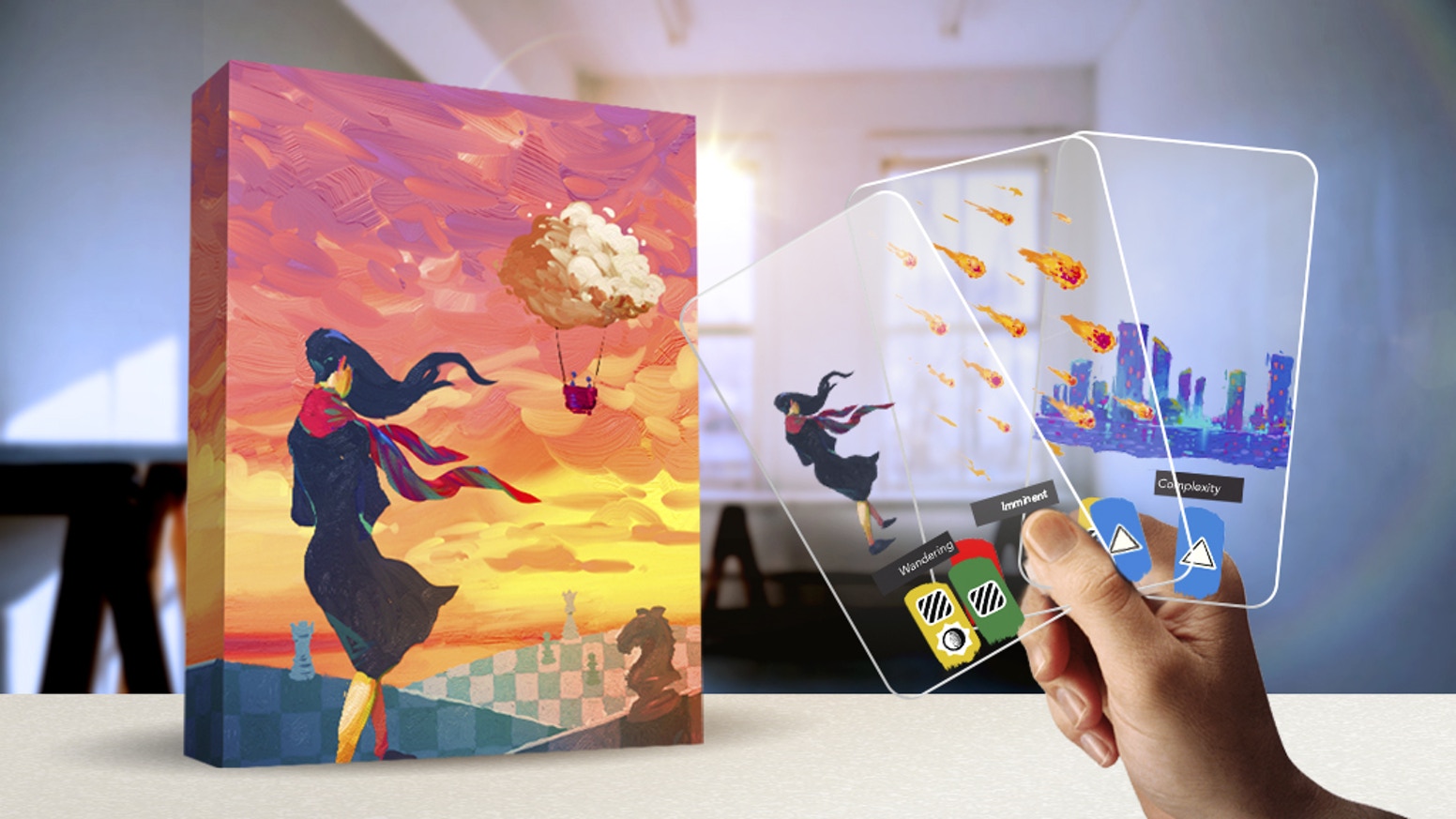When I first heard about Canvas on the Secret Cabal Gaming Podcast, I immediately thought of my wife Joy. As an artist (among many other things), I thought she’d really appreciate the theme. As it happens, I was both right and wrong.
Canvas is a card game for one to five players from Road to Infamy Games. The idea is that each player is an artist at a festival, working on paintings that meet the brief for the judges to score winning ribbons. Paintings are created by stacking three transparent cards with images on a background card. Each of the transparent cards has colors and symbols, and combining them to get the right combination to score ribbons is the heart of the game.

There are five ribbon colors in Canvas. Red, blue, green, and purple ribbons score based on scoring cards, which are different in each game. For example, you might score a ribbon for having a painting with each of the five color swatches visible, or for each visible pair of shape and texture symbols. Grey (bonus) ribbons score based on special symbols on the cards, so you might get one for each visible hue symbol if that bonus symbol was visible. All the grey ribbons are worth two points at the end of the game, while the colored ribbons have escalating scores the more you acquire. One might only be worth one point, two worth four, and three worth eleven.
Each player also has four “inspiration” tokens in the shape of painter’s pallettes. These tokens come into play in one of the two actions a player can take on their turn. If the player has less than five transparent cards in their hand, they can take a card from a tableau in the center of the table. The leftmost card is free, but if the player wants any of the other four, they must put tokens down on each one they skip. Conversely, if a player takes a card with tokens on it, those add to their pool.

The other action a player can take on their turn is to make a painting by sleeving a background card with three transparent art cards. The player then scores the appropriate number of ribbons based on the objective cards and any bonus symbols. Since hand size is limited to five, a player with five cards must make a painting – even if it’s not an optimum one. The game ends when all players have completed three paintings. Players who finish their paintings early sit out the remaining turns until everyone else finishes. Once everyone completes their paintings, the players tally up the score for their ribbons, and the high score wins.
For solo play, Canvas provides two options. “Painting with Vincent” provides a dummy player that will take art cards from the tableau, and “Solo Puzzle” gives you a limited number of inspiration tokens to choose art cards. In both cases, the player scores in the same way as in a multiplayer game, and a scoring table provides for self-evaluation. Of the two, I enjoyed “Painting with Vincent” more, in part because the card he chooses is selected by flipping the inspiration tokens and counting the number face up.
So is the game fun? I certainly enjoyed it. Figuring out the best combination of transparent cards and the order to stack them in is a big challenge, and watching the tableau waiting for your turn to choose just the right card (and maybe seeing it disappear) is fun. I think having each player have a hidden goal in addition to the common ones would add a nice flavor to the game, and would be easy to house-rule, but the game plays well as it is. So why did I say I was right and wrong about Joy liking it?
I’ve played the game with two different artists now, and it’s a real struggle for them to put aesthetics aside in favor of scoring. Sometimes your high-scoring painting is also attractive, but often it’s kind of odd looking, and the artists at the table tended to end up with lower scores because they were trying to make something that looked good. In a way, this speaks well to the theme, but in another way, it means that the goals are a bit at odds with the realities of composition and theme in visual art.

Overall, however, this is a great quick game, easy to teach, with a lot of potential depth. It definitely rewards replay, and there are enough variations in the scoring cards to keep it interesting in the long haul.



Leave a Reply